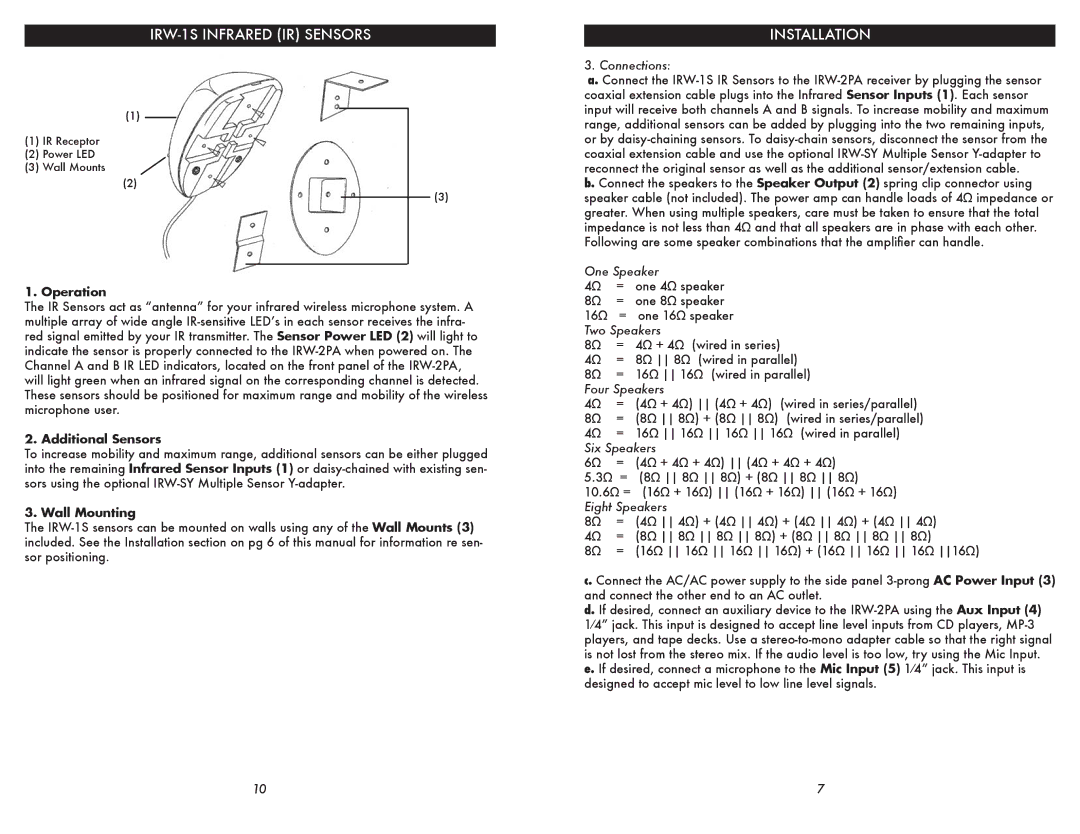IRW-2PA specifications
Nady Systems IRW-2PA is a sophisticated wireless microphone system specifically designed for professional audio applications, featuring remarkable technology and user-friendly characteristics. This system offers a reliable solution for musicians, presenters, and audio professionals seeking high-quality sound without the constraints of traditional wired setups.At the core of the IRW-2PA is its UHF (Ultra High Frequency) transmission technology, which ensures exceptional sound clarity and minimal interference. This frequency range provides a robust and stable transmission, making it suitable for live performances, corporate events, and educational environments. The system also offers multiple channels to avoid any possible signal conflicts, ensuring seamless operation in busy environments.
One of the standout features of the IRW-2PA is its dual-channel receiver, which allows users to connect two microphones simultaneously. This is especially beneficial for duets or interviews, where two speakers can be amplified without the need for multiple receivers. The receiver's backlit display provides clear visibility of essential information such as channel selection, signal strength, and battery life, allowing for quick adjustments even in low-light conditions.
The IRW-2PA includes a handheld microphone that is ergonomically designed for comfort and ease of use. The microphone features a cardioid pickup pattern, which effectively captures sound from the front while minimizing background noise, providing a professional sound that is crucial for live performances.
Another notable characteristic is the system's wide frequency response range, ensuring that it accurately reproduces vocals and instruments with clarity. This, combined with a high dynamic range, allows for effective handling of varied audio sources without distortion.
Battery life is another important aspect of the IRW-2PA. The system utilizes rechargeable batteries, which not only save costs over time but also ensure convenience for users who are frequently on the go. The system can operate for several hours on a single charge, making it an ideal choice for long events and performances.
Overall, the Nady Systems IRW-2PA stands out for its advanced technology, user-friendly features, and reliable performance. Its combination of dual-channel capability, ergonomic design, and robust UHF transmission makes it an excellent choice for professionals in need of a versatile and high-quality wireless microphone system. With its attention to detail and commitment to sound excellence, the IRW-2PA truly represents the pinnacle of modern audio technology.

